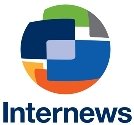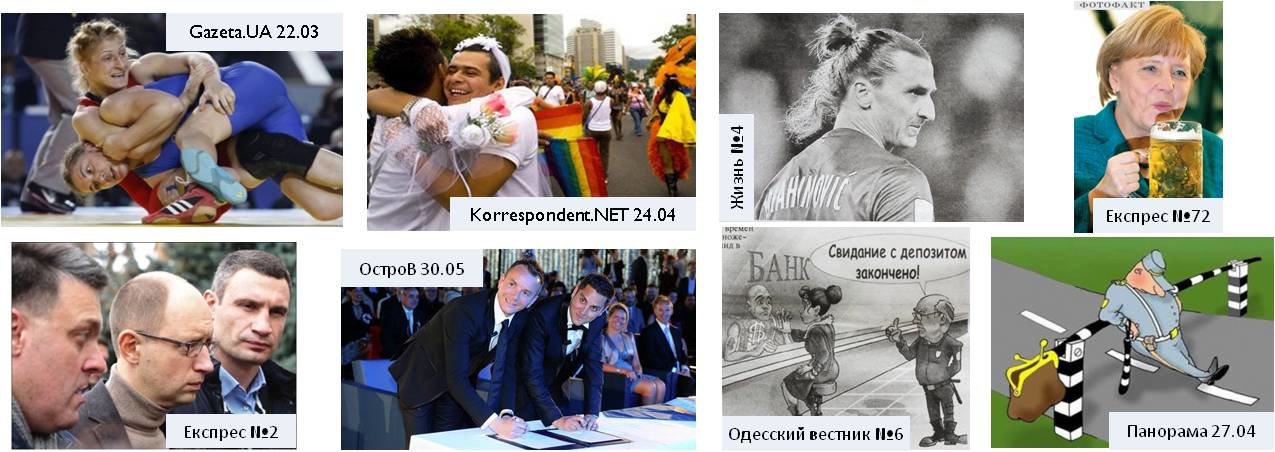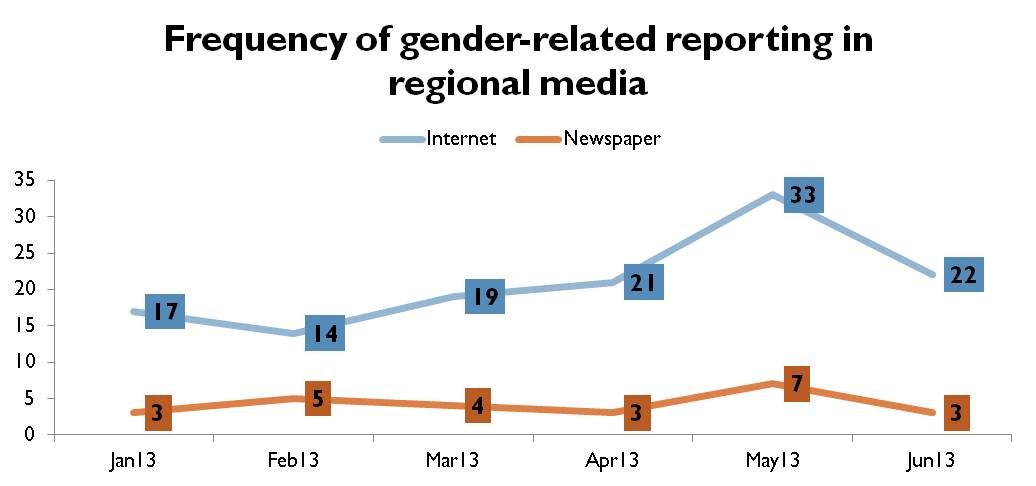Схожі новини
 Щорічне опитування Інтерньюз щодо споживання ЗМІ засвідчило суттєве зниження прихильності українців до російських ЗМІ. Дослідження показало, що перегляд російського телебачення знизився на 8% з 27% у 2014 році, й перегляд російських Інтернет ЗМІ знизився на 17% з 44% у 2014 до 27% у 2015 році.
Щорічне опитування Інтерньюз щодо споживання ЗМІ засвідчило суттєве зниження прихильності українців до російських ЗМІ. Дослідження показало, що перегляд російського телебачення знизився на 8% з 27% у 2014 році, й перегляд російських Інтернет ЗМІ знизився на 17% з 44% у 2014 до 27% у 2015 році.
 Internews’ annual media consumption survey shows a dramatic drop in Ukrainians’ use of Russian media. The survey shows that Russian TV viewership shrank to 8% from 27% in 2014, and Russian internet use slid to 27% in 2015 from 44% in 2014. While lower consumption rates for Russian TV might be partially explained by the Ukrainian government’s initiative to ban transmissions of Russian TV signals within the country, internet access has not been restricted.
Internews’ annual media consumption survey shows a dramatic drop in Ukrainians’ use of Russian media. The survey shows that Russian TV viewership shrank to 8% from 27% in 2014, and Russian internet use slid to 27% in 2015 from 44% in 2014. While lower consumption rates for Russian TV might be partially explained by the Ukrainian government’s initiative to ban transmissions of Russian TV signals within the country, internet access has not been restricted.
 Інтерньюз Нетворк шукає виконавців медіа-досліджень для здійснення оцінки ефективності проекту Інтерньюз із задоволення інформаційних потреб вимушено переміщених осіб (ВПО) зі східних регіонів України. Запрошуємо дослідницькі та моніторингові компанії, приватних консультантів та/або неурядові організації подавати заявки на виконання одного або кількох видів робіт, що описані нижче.
Інтерньюз Нетворк шукає виконавців медіа-досліджень для здійснення оцінки ефективності проекту Інтерньюз із задоволення інформаційних потреб вимушено переміщених осіб (ВПО) зі східних регіонів України. Запрошуємо дослідницькі та моніторингові компанії, приватних консультантів та/або неурядові організації подавати заявки на виконання одного або кількох видів робіт, що описані нижче.
 «Інтерньюз» повідомляє про вакансію місцевого медіа-консультанта (Local Media Liaison) для роботи в новому 2-річному проекті з задоволення інформаційних потреб внутрішньо переміщених осіб (ВПО) зі сходу країни. Інтеньюз шукає досвідченого медіа-фахівця з глибоким знанням роботи ЗМІ національного та регіонального рівня та широким колом медіа-контактів. Медіа консультант надаватиме фахову технічну допомогу гуманітарним організаціям, місцевим урядам та громадам у подоланні гуманітарної катастрофи.
«Інтерньюз» повідомляє про вакансію місцевого медіа-консультанта (Local Media Liaison) для роботи в новому 2-річному проекті з задоволення інформаційних потреб внутрішньо переміщених осіб (ВПО) зі сходу країни. Інтеньюз шукає досвідченого медіа-фахівця з глибоким знанням роботи ЗМІ національного та регіонального рівня та широким колом медіа-контактів. Медіа консультант надаватиме фахову технічну допомогу гуманітарним організаціям, місцевим урядам та громадам у подоланні гуманітарної катастрофи.
Надсилайте резюме та мотиваційний лист англійською мовою до 5 серпня 2015 року на адресу: [email protected] та [email protected].
Повне оголошення англійською мовою з описом вимог до кандидатів >>>
 Institute of Mass Information published its monitoring of journalists' right for the first half of 2015. Physical aggression against journalists in Ukraine started to decrease: for the first half of 2015 IMI experts registered 23 assaults against journalists in Ukraine, which is almost 11 times less than in the same period of 2014 (249 assaults), and by 1.5 times less than in the second half of 2014 (37 assaults).
Institute of Mass Information published its monitoring of journalists' right for the first half of 2015. Physical aggression against journalists in Ukraine started to decrease: for the first half of 2015 IMI experts registered 23 assaults against journalists in Ukraine, which is almost 11 times less than in the same period of 2014 (249 assaults), and by 1.5 times less than in the second half of 2014 (37 assaults).
 Internews commissioned a qualitative research on implementation of media literacy course in secondary schools of Ukraine. The study held in March-April 2015, aimed surveying teachers and students at root level to understand barriers and prospective in applying media literacy course at practice.
Internews commissioned a qualitative research on implementation of media literacy course in secondary schools of Ukraine. The study held in March-April 2015, aimed surveying teachers and students at root level to understand barriers and prospective in applying media literacy course at practice.
Conducted in cooperation with European Research Association (ERA), the research revealed that media education in secondary schools is implemented through successful combination of efforts of Academy of Ukrainian Press that trained OIPE coordinators/teachers at its schools and the Institute for Social and Political Psychology of National Academy for Pedagogical Sciences that developed the national experiment for 80 schools of 10 oblasts of Ukraine.
 For you attention, the recent weekly briefer for Ukrainian media sector developments over period of June 25 - July 1, 2015. You may subscribe for weekly briefers by sending request to [email protected].
For you attention, the recent weekly briefer for Ukrainian media sector developments over period of June 25 - July 1, 2015. You may subscribe for weekly briefers by sending request to [email protected].
 U-Media gathered the most important news over week April 9-15, 2015 that influenced the media development and freedom of speech in Ukraine. If you want to receive the weekly updadtes regularly, please send us email to [email protected] with the request to be subscribed.
U-Media gathered the most important news over week April 9-15, 2015 that influenced the media development and freedom of speech in Ukraine. If you want to receive the weekly updadtes regularly, please send us email to [email protected] with the request to be subscribed.
- У-Медіа » Медіа і демократія » Медіа дослідження » Gays and domestic violence in families constitute key topics for mass media reports on gender-related issues
- Переглядів: 1087
- Автор: rfgtw
- Дата: 7-03-2014
Gays and domestic violence in families constitute key topics for mass media reports on gender-related issues
Категорія: Медіа дослідження, Media Research, News
The general gender-related picture presented by regional media can be described as follows: male characters prevail on female ones by three times; photo reports mostly feature “mature” men (while covering “serious” issues) and young women at leisure. Specifically gender issues find themselves in the focus of media mostly when problems of non-traditional sexual orientation are covered.
The researchers have determined that regional media feature a significant misbalance in terms of gender representation: the share of men represented in print media exceeds that of women by three times (women - 28% vs. men – 72%). The disproportion in on-line media is 4 times (women – 20% vs. men – 80%). News on-line media have even bigger representation of men in their reports; the share of women ranges from 16% (correspondent.net) to 25% (segodnya.ua).
Print and on line media reproduce the traditional version of gender hierarchy: the most gender balanced reports cover humanitarian and private spheres of life presented as areas of “natural” female presence by mass media. Men are prioritized by mass media while covering public life and industrial issues.
Context
Generally both men and women are mostly represented in media reports in business and industrial context: men – 68% in press and 69% - on-line; women – 58% in press and 53% - on-line. However, community life involvement is also significant constituting almost one fifth (17% in press and 18% on-line) for men; and more than one fifth (21% for press and 25% - online) – for women.
Domestic, leisure-related context is much more characteristic for representation of women in press and in Internet (14%, 12%) while cases of men represented in domestic environment or at leisure are very rare, especially in Internet (6%, 3%). Criminal context is present in 6% of press reports and 9% of Internet reports about women; the figures for men in criminal context are respectively 7% and 8%.
Physical violence prevails in reports on violence in both types of mass media. Press mostly focuses on “economic violence” over men and women; on-line publications mostly cover sexual violence in relation to women and moral and psychological violence over men.
Visual images

Photo representations of gender identities in press and Internet reproduce male dominating model translated by texts: male image is used most often for illustrations. The proportion of visual of images of men and women is 1:1.7 (36% vs. 64%) in press and 1:2.4 (29% vs. 71%) in Internet. Disproportion of gender representation is characteristic for images in most social spheres. The images of “mature man” and “young woman” take the lead among all other images as the most attractive for audiences; however, “mature man” is an undisputable leader.
Gender issues-related reports

Gender policy and gender equality issues are under discussion with varied frequency by each outlet; however there is no regularity in this discussion – both by press and on-line media. Gender-related issues are covered sporadically and mostly provoked by some external ad hoc factors: incidents, public discussions, public actions, published government stats or draft bills.
The content of the reports marked by “gender terms” is shifted towards LGBT people, whereas specific features of men and women are rarely in the scope of outlets’ attention. Therefore, these issues are covered from the perspective of the societal traditional view.
The key notions used in the texts with mentions of “gender-related issues” include: “homosexualism”, “gay marriages”, “gay prides”, “gay communities”, “homophobia”, “gender discrimination”, “LGBT”, “feminism”.
The word “gay” is often interwoven into headlines as a pun – “Hey (sounding in Russian like “gay”), you, upstairs!” (Vash Shans #21 – 21.05), “Washington turns into a gay capital” (Vash Shans #8 – 20-27.02), “It is not a gay pride, it is a gay shame!” (Vash Shans #22 – 29.05-5.06), “Hey, hey (gay, gay) in Ukrainian” (Express №20 – 21-28.02). New words and phrases are coined: “gay occupation” (Vash Shans #21 – 21.05), “homofascism” (Vash Shans #16 – 17-24.04), “homodictatorship”.
Contact info: Serhiy Dyoma, AUP Development Manager, phone number: (050)561 59 18,

